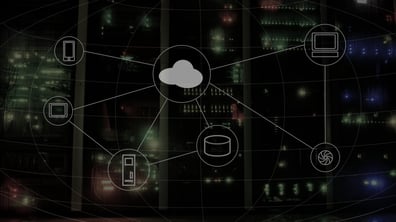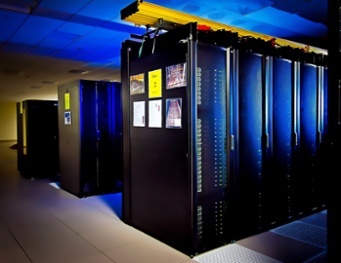Sure, the industrial Internet of Things sounds cool. Real cool, in fact. But how do you do it and where do you get started?
For a self-proclaimed technology geek like myself, the industrial Internet of things (IIoT) is a pretty exciting topic. I wasn’t exactly born digital (individuals who have grown up with the current state of ubiquitous computing and communications).
 But I did grow up around the time the Internet started catching on with the mainstream population.
But I did grow up around the time the Internet started catching on with the mainstream population.
And I’ve spent a lot of time wondering why we haven’t sped up the application of some of today's amazing Internet technology to real-world problems like intelligent municipal infrastructure, energy production, and manufacturing.
But I think there’s a solution.
And its name is DevOps.
While the IIoT consists of some pretty amazing technologies, there are still a lot of questions around how those technologies will be blended together to create value-added applications. And more importantly, who exactly is going to build them. An inherent challenge facing the IIoT is a problem known as the OT/IT divide.
Industry experts have been scouring tradeshows, the Internet, and industry publications to figure out how to bridge the gap and get these two totally different types of technology professionals and industry cultures working together. Or at least find a starting point.
As the automation industry often does, it may be a good time to borrow a bit of technology or process from the information technology realm. In this case, DevOps.
 See, this whole OT/IT divide isn’t exactly a new problem. It may be new to the automation, manufacturing, and process control industries.
See, this whole OT/IT divide isn’t exactly a new problem. It may be new to the automation, manufacturing, and process control industries.
But getting two totally different types of industry cultures working together with different types of technologies to better serve a customer base is not a new problem.
In the IT realm, software development teams and IT operations teams have had to learn to work together to deliver monumental pieces of technology made up of the hardware found in data centers (IT operations) and the software that runs on those servers (development).
For example, technology that lets you order just about anything you can think of off Amazon and have it delivered tomorrow is built by successful DevOps teams.

The same is true for connecting with your friends you haven’t seen in decades over Facebook. Or viewing that street image of your destination on Google Maps.
All this is done with successful DevOps teams working together, bridging the gap between the physical world of servers and IT infrastructure, and the digital world of bits and bytes in software code.
To deliver all of these amazing innovations we use everyday, a software engineer and a hardware engineer (totally different disciplines) had to figure out how to work together to deliver a product or service efficiently to their customer.
More importantly, they had to figure out a way to do it better than their competitors to stay in business. Can anyone say MySpace?
 Amazon has a great definition of DevOps: "DevOps is the combination of cultural philosophies, practices, and tools that increases an organization’s ability to deliver applications and services at high velocity, evolving and improving products at a faster pace than organizations using traditional software development and infrastructure management processes. This speed enables organizations to better serve their customers and compete more effectively in the market."
Amazon has a great definition of DevOps: "DevOps is the combination of cultural philosophies, practices, and tools that increases an organization’s ability to deliver applications and services at high velocity, evolving and improving products at a faster pace than organizations using traditional software development and infrastructure management processes. This speed enables organizations to better serve their customers and compete more effectively in the market."
As digital technology continues to penetrate the industrial automation, manufacturing, and process control industries, successful DevOps teams will be what sets one organization apart from another.
Using a DevOps model connects two siloed engineering organizations together as one team. The team works across an application's entire lifecycle, from development and test, to deployment, to operations and support. Processes that historically have been manual and slow are automated.
The tools and technology stack these teams use help them work quickly and reliably, both as individuals and as a team. The results are improved collaboration, better product reliability, and faster delivery. 
This sounds like a great model to bridge the gap between OT and IT and start connecting assets in the physical world to the digital world.
You can learn more about the IIoT and recommendations for tackling your first application in the 2017 State of the IIoT whitepaper.


